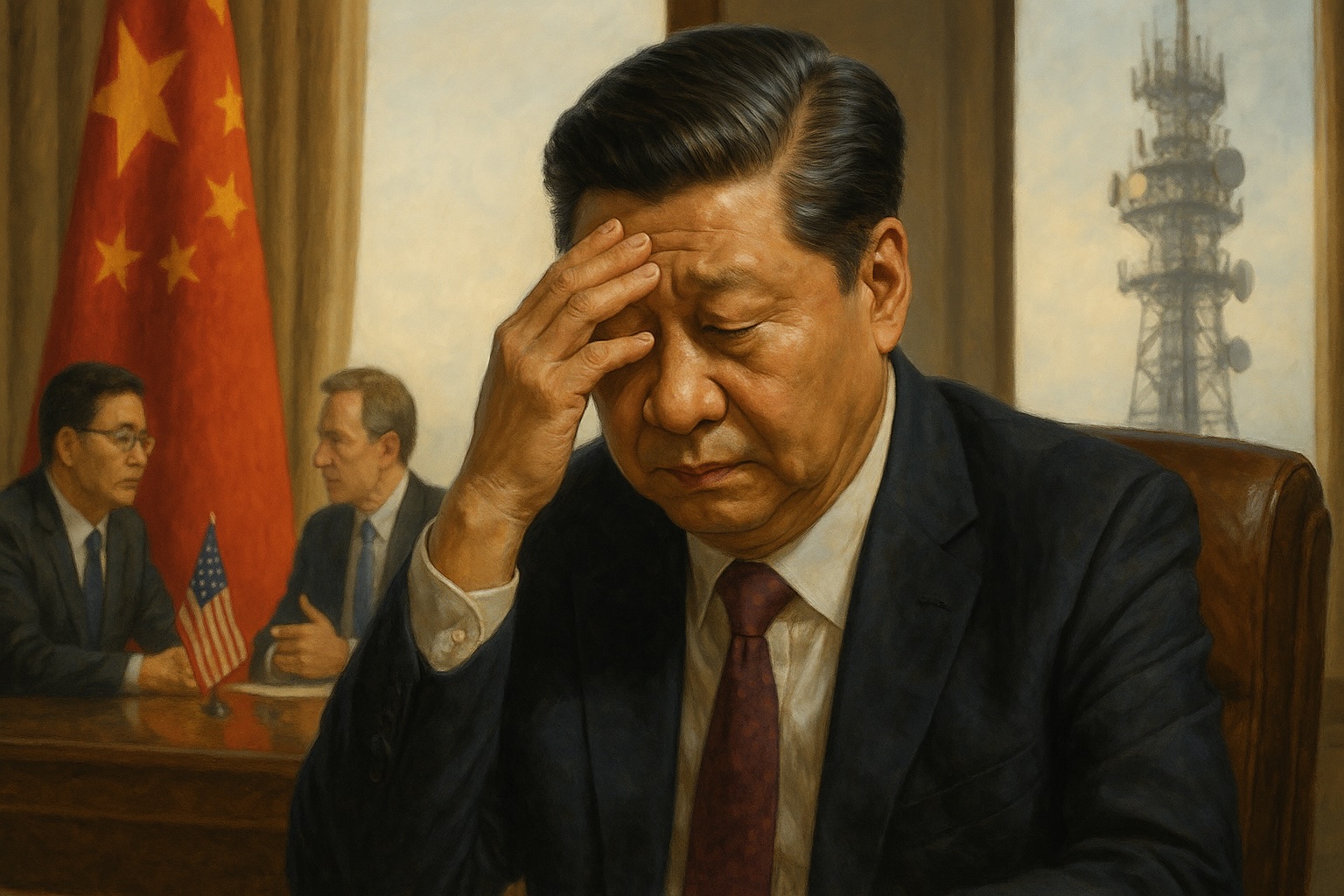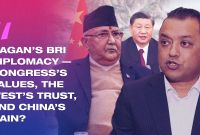China makes concessions and Xi’s waning power

China’s recent trade concessions to the United States mark a dramatic shift in its diplomatic posture, one that betrays not confidence, but desperation within Zhongnanhai. After a prolonged period of stonewalling Washington, including President Xi Jinping’s refusal to take a call from President Trump, Beijing has returned to the negotiating table, abandoning its earlier stance of strategic defiance. This reversal underscores two critical developments: mounting economic pressure is forcing China to compromise, and Xi Jinping’s authority within the Communist Party of China (CPC) is eroding.
Historically, China has resisted dialogue on both economic and security fronts, citing US hostility, sanctions, and strategic containment. From refusing Defence Department hotlines under Obama, to rejecting trade talks during Trump’s tariff offensives, and delaying working-group discussions under Biden, China has consistently portrayed the US as the aggressor. But now, under a second Trump term, Beijing appears to be backtracking.
Why? At the heart of the matter lies China’s faltering economy. Economic growth has been a central pillar for the CPC's legitimacy. Under Xi, China is facing a major economic crisis, layered with diplomatic and political consequences, threatening the longevity of the CPC. In Q1 of 2025 alone, Chinese exports to the US fell to USD 108.7 billion, with imports plunging to USD 31.82 billion. The ripple effects of US tariffs, tech decoupling, and dwindling foreign investment have left Beijing scrambling to revive domestic consumption, boost employment, and stave off a deeper crisis. Yet, Xi Jinping’s economic management, characterized by tightening political control without meaningful structural reform, has yielded little improvement.
Amid this turmoil, reports have surfaced suggesting Xi’s grip on power may be loosening. Recent internal reforms have rolled back the influence of several “leading small groups” and “central commissions”, institutional creations that once centralized authority under Xi. Such curtailments are rare and signal internal recalibration within the CPC. Taken together, China’s sudden willingness to make trade concessions and the vagueness around who exactly is spearheading these negotiations, raise serious questions about Xi’s current role and influence. Is he still directing China’s US policy, or has authority been redistributed?
Statements by China’s Commerce Minister, Wang Wentao, further underscore the extent of Beijing’s climbdown. In a rare conciliatory tone, Wang remarked“Practice has proven that through dialogue and consultation, with leadership and communication at the highest levels, we can properly manage contradictions and resolve our differences.” He emphasized that previous talks in Geneva and London proved that renewed trade war was unnecessary, and signaled Beijing’s desire for stability over confrontation.
While the details of the deal are not disclosed, the Commerce Ministry confirmedthat the two parties reached a consensus on trade framework, and the preliminary information paints a clear picture of asymmetry. The US will lower tariffs on Chinese goods to 55%, while China will impose a modest 10% tariff on American imports. China will also resume exports of rare earth magnets and other critical minerals, resources it previously weaponized during trade tensions. In return, the US will relax restrictions on Chinese student visas, but crucially, will maintain its ban on exports of advanced AI chips. So far, China does not appear as the victor and concessions in Xi's China are a sign of weakness.
Still, Beijing is unlikely to publicly frame the deal as a concession. Internally, it continues to present US pressure as economic “bullying” meant to rally nationalist resilience. Yet, Wang’s repeated emphasis on “deepening consensus” and “enhancing cooperation” betrays a deeper urgency. The regime needs economic stabilization, and it is willing to trade symbolic defiance for practical relief.
As and when the contents of the deal are made public, Chinese state media could attempt to reframe the deal as a strategic victory against an unrelenting hegemon. But no amount of spin can mask the underlying reality that these concessions represent a fundamental retreat from Xi Jinping’s assertive economic nationalism. Whether this signals a broader shift in China’s foreign policy or a temporary crisis response remains to be seen.
In sum, China’s concessions in the latest trade negotiations are not just tactical adjustments, they signal deeper structural strains within both the Chinese economy and the Communist Party's internal hierarchy. Beijing’s shift, however temporary, reflects the limits of its self-reliance strategy and the mounting costs of Xi Jinping’s centralized approach. This shift has resulted in reversing of the key strategy for the US of no negotiations or dialogues for the risk of appearing weak. It also symbolizes muzzling of Xi’s power by the party members, signalinga change in Chinese leadership. However, as the trade deal unfolds, the world should prepare for a recalibrated Chinese strategy, one that may seek to reassert strength through other arenas like military posturing around South China Sea and Taiwan, diplomatic influence, or technological self-reliance. Ultimately, China’s climbdown reveals more than desperation; it reveals the fraying edge of a political-economic model under stres



